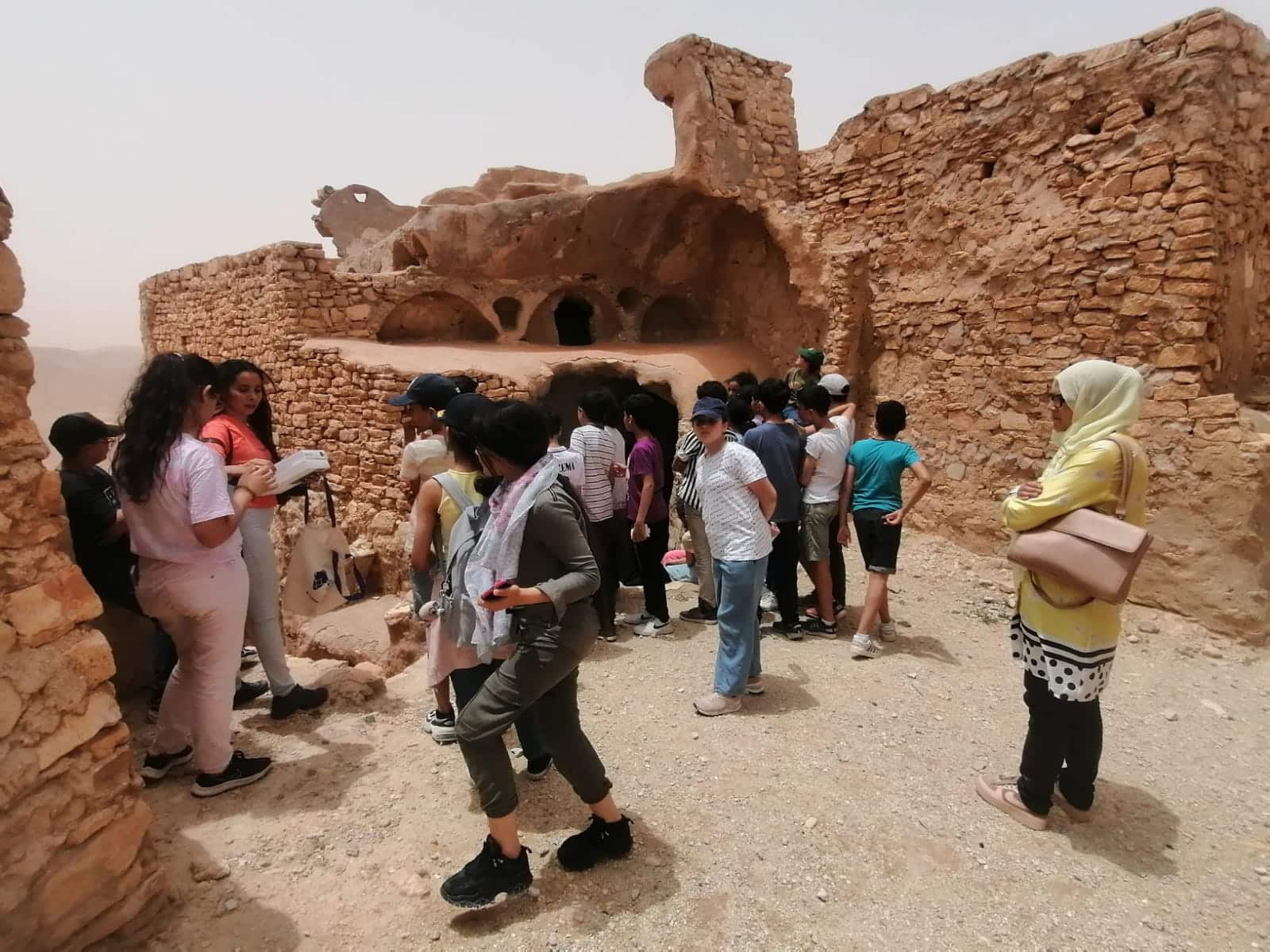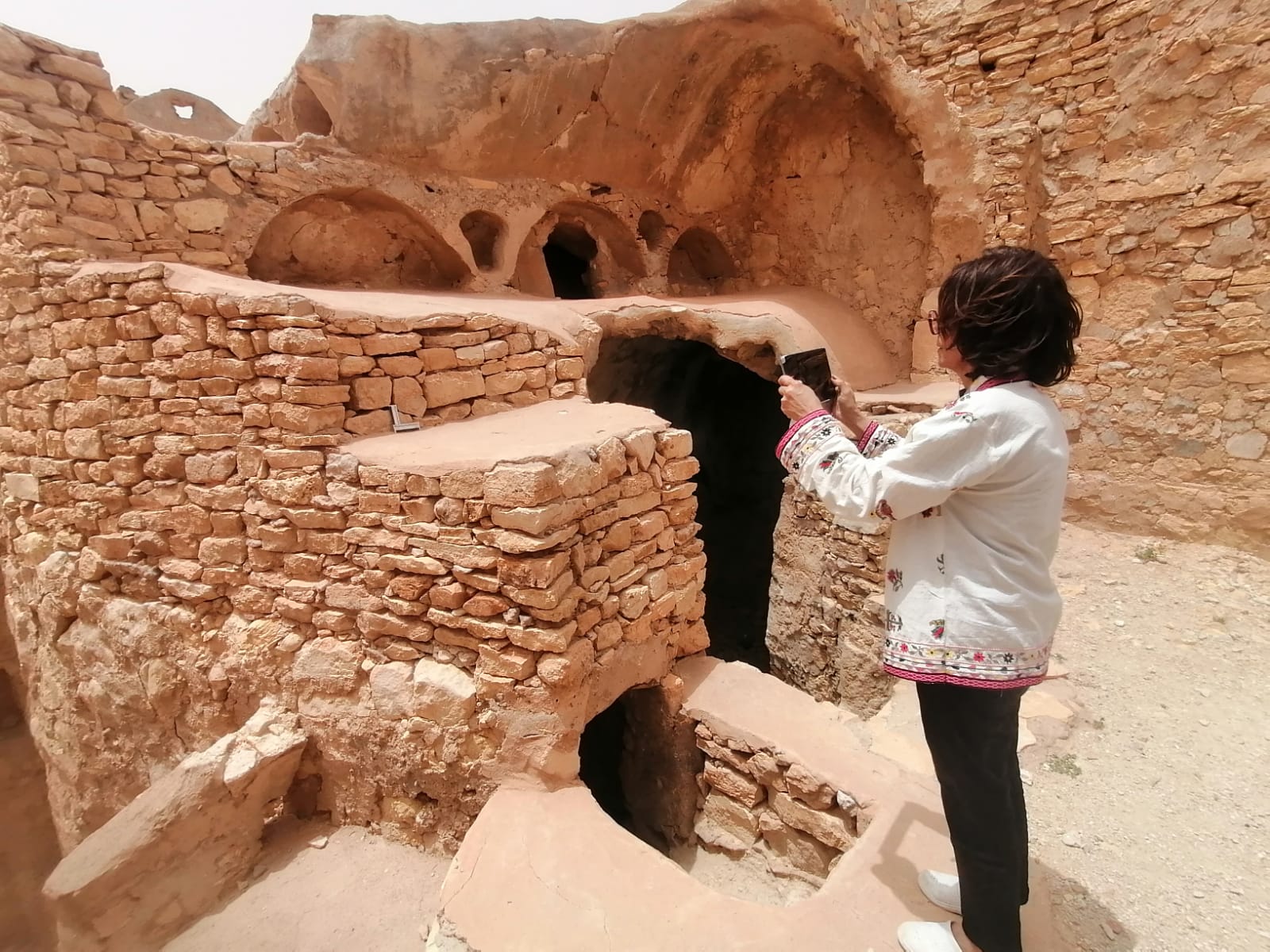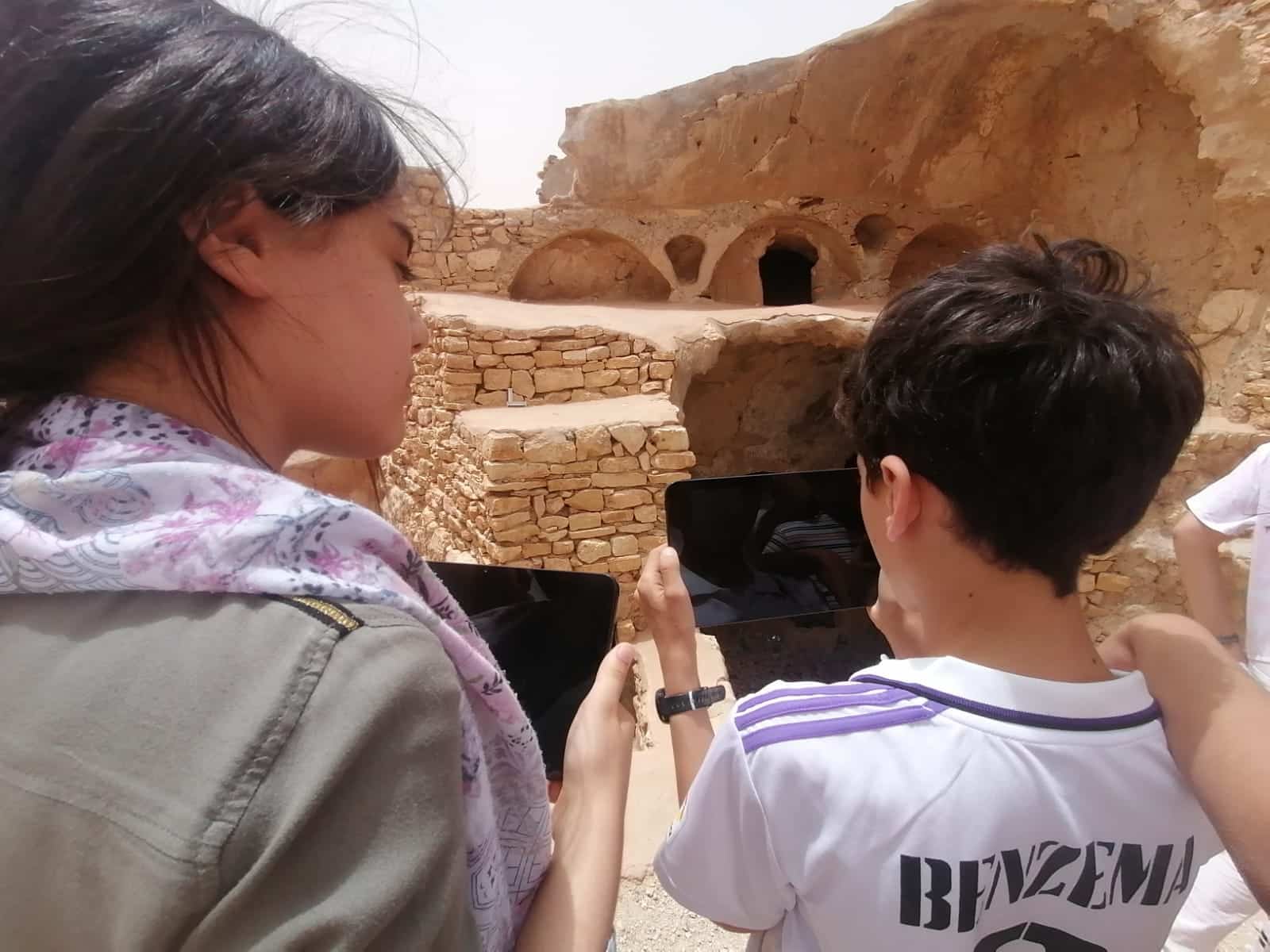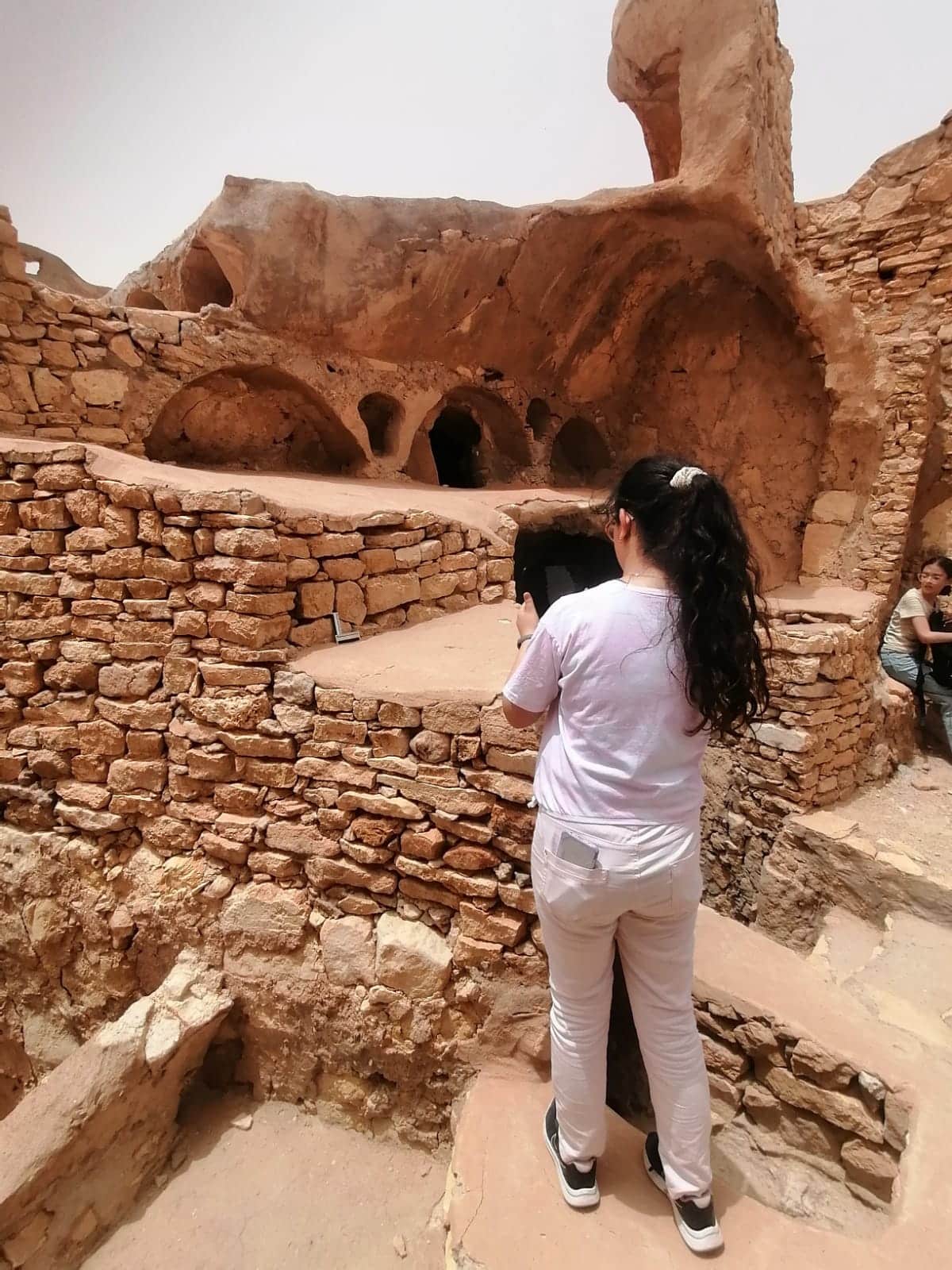

Chenini Visit for pupils from Djerba
Rabeb Chrayet
Chenini is a must-visit site in Tunisia since it is a unique gem of the Tunisian Sahara Desert, being one of the few Berber villages in Tunisia located on a hilltop between two ridges, as well as the ‘’ Satellite’’ featured in the Star Wars movies.
For me, Chenini was a childhood discovery. I can remember every single detail of that special town that I visited once during a school trip (From Djerba, Medenine to Chenini, Tataouine).
That trip had stimulated my interest in traveling and exploring the heritage of my country, Tunisia. I realized how culture, rituals, and traditions could be so different from one region to another.

Recently, I was told that the ASOR team suggested to our group in Carthagina to organize an activity for pupils from a school in Djerba, reminiscent of my own childhood experience.
The Chenini visit was a fun and a great opportunity for pupils to learn about our heritage and how we can document it in divers’ creative techniques.
During this visit on June 4th 2023, we visited the Chenini village, in particular the well-known Chenini Mosque. You can see the white mosque easily when you look at the horizon. Additionally, we organized a workshop about the photogrammetry technique with pupils in an old ksar (an ancient, fortified Berber structure).
The special architecture of the ksour (plural of “ksar’’) made the village of Chenini popular and attractive for people around the world to explore. The astonishing architecture of the ksour rises up in the heart of an arid landscape of mountains, plateaus and rugged rock formations. These “desert castles” were once rallying points for the semi nomadic peoples of the region who would stock their harvests in stacked compartments known as ghorfas, out of reach of looters. The ksour of the ridges, today in ruins, stand atop rugged mountains, married to the rock with which they are camouflaged, in the heart of villages such as Chenini, Douiret and Guermassa. Other ksour, much more extensive, irresistibly evoke the image of gigantic hives with their countless chambers surrounding a vast courtyard.
Then, we visited the most famous destination in the Chenini town: the Mosque of the Seven Sleepers. The axis of the wall of the Qibla is marred by a hollow 1.25 meters deep, the upper part of which is formed by a cul-de-four with a low profile. The lower part of the niche is divided vertically into two side compartments separated by a low wall which reaches the level of the start of the arch. These recesses play the role of Mihrâb and of the preaching pulpit with two steps, or the Minbar. This niche protrudes out of the axis of the wall of the Qibla. At its northern corner, the prayer hall leads to a circular funerary chamber. The chamber is covered by a conical dome whose cap rests on two superimposed cylindrical drums. The space contains an elongated burial covered with recently painted rubble.

On the west side, the prayer hall opens into a ghar, or cave, dug into the hill. On the same rocky massif rises a minaret whose base is almost located at the height of the roof of the monument. This tower, slightly leaning towards the east, roughly aligns with the incline of the neighboring hill.
At the foot of the mosque, partly inside a cave, lies tombs varying in length from 4 to 6 meters. Oral tradition links them to the myth of the Seven Sleepers (al-Sab’a Rgûd). Indeed, their unusual appearance is linked to the “People of the Cave”, by allusion to the Qur’anic sura XVII, lines 9-27. Interestingly, this legend is also connected to a miracle believed by Christians and Muslims. A group of faithful believers, three, four, five or seven in number, who were fleeing the tyranny of the pagan emperor, went to sleep with their dog on the hilltop. These believers miraculously slept for three hundred solar years (or 309 lunar years). When they awoke, they discovered that the society from which they had fled had been replaced by one of monotheistic worship. Their bodies had not stopped growing during their sleep. On our trip, the students were so surprised by the length of each single tomb and how these could be the people of the cave.
Finally, we moved to our last destination ‘’The Ksar Hadada of Tataouine” or “Ksar Haddada,’’ which is a ksar located in the south of Tunisia, five kilometers from Ghomrassen and about eighty kilometers from Tataouine.
The ksour were fortresses built on top of the mountains to protect crops from the many looters. Storage spaces contained fodder, oil, and cereals and thus constituted several granaries over which a guard watched. They are now mostly abandoned.
Today, the ksar has partly become a hotel for tourists. Part of it was used by director George Lucas in the movie Star Wars Episode 1: The Phantom Menace to create the village of Mos Espa on the planet Tatooine, where Anakin Skywalker was born. It is now visited by many tourists and tour operators, who offer ksour packages featuring visits to Tataouine, Ksar Haddada, and the Berber village of Chenini. During our trip to Ksar Haddada, we organized a workshop about the “Kobo application’’ for pupils to learn how we can document every single site with all of its physical and moral dimensions, and we invited them to try it on the tablets and discuss every detail.
Overall, it was such a pleasure to experience the school visit with the pupils of the school of Habib Bourguiba in Djerba and launch other activities in Carthagina for future generations to promote and sustain our Tunisian heritage.

This gathering provided a moment to reflect on our partnerships these past few years and has launched enthusiasm among all involved to expand the work. ASOR is committed to advancing this goodwill. Currently, ASOR is facilitating virtual conversations with its partners in the Maghreb and Sahel to reflect on the project as a whole and suggest ways to build on the momentum of these collaborations into the future. One suggestion is the formation of regional and country-specific working groups on topics related to heritage work (GIS skills, Heritage Advocacy, Heritage Digitization Efforts, Grant Writing and Grant Proposal Development, and Youth Heritage Initiatives to name a few). ASOR and its partners continue to explore new projects and opportunities that build upon the KoboToolbox heritage database and new interpersonal connections created over the past two years in the region. Please visit the ASOR CHI website for further updates on this trip and from all of our partners.